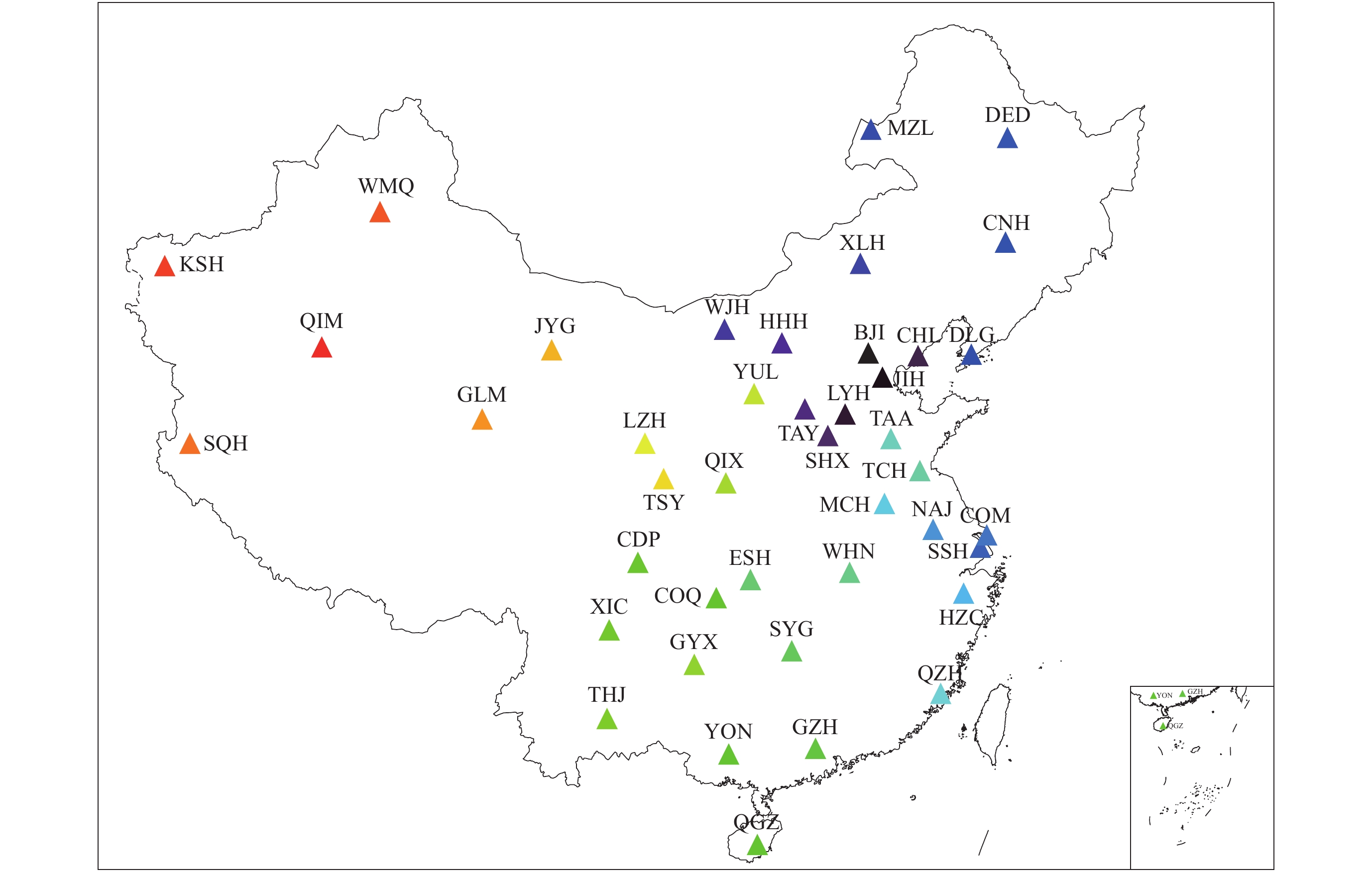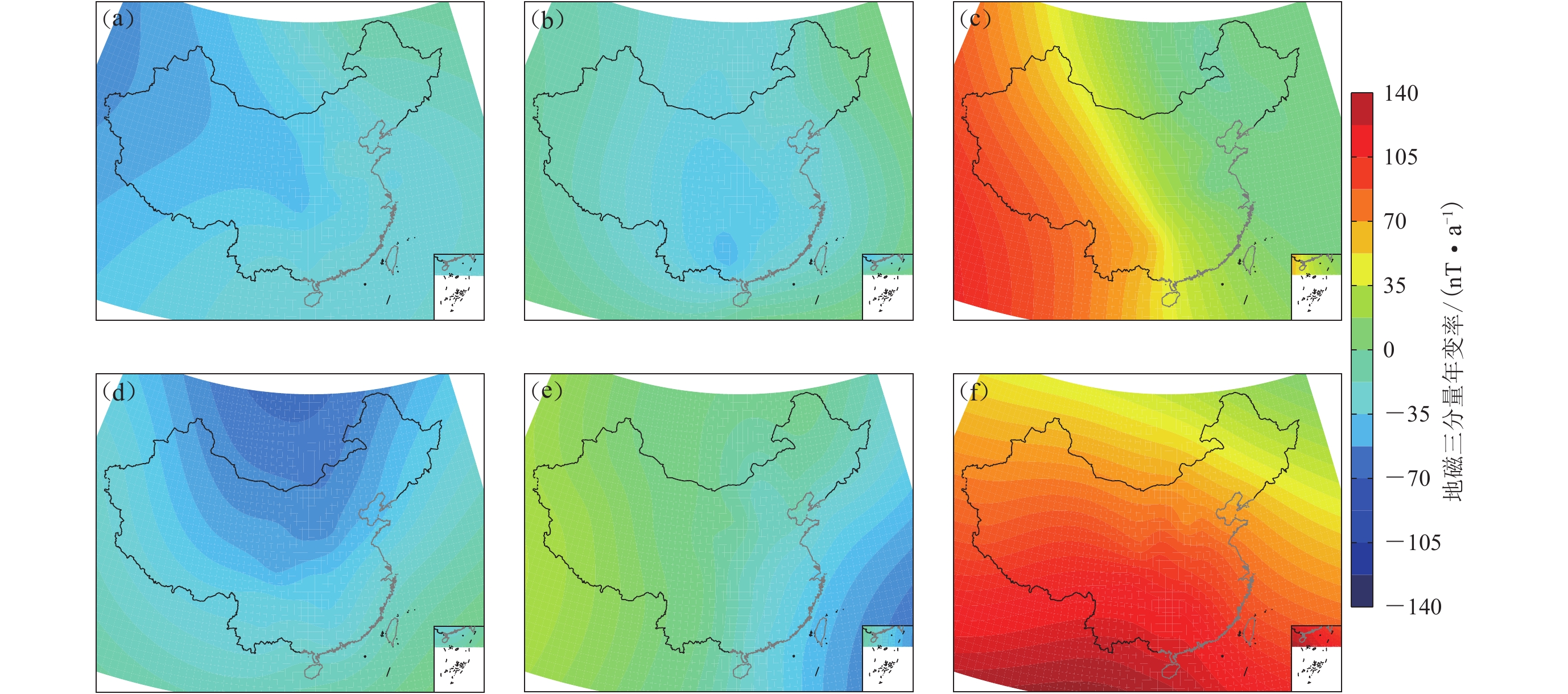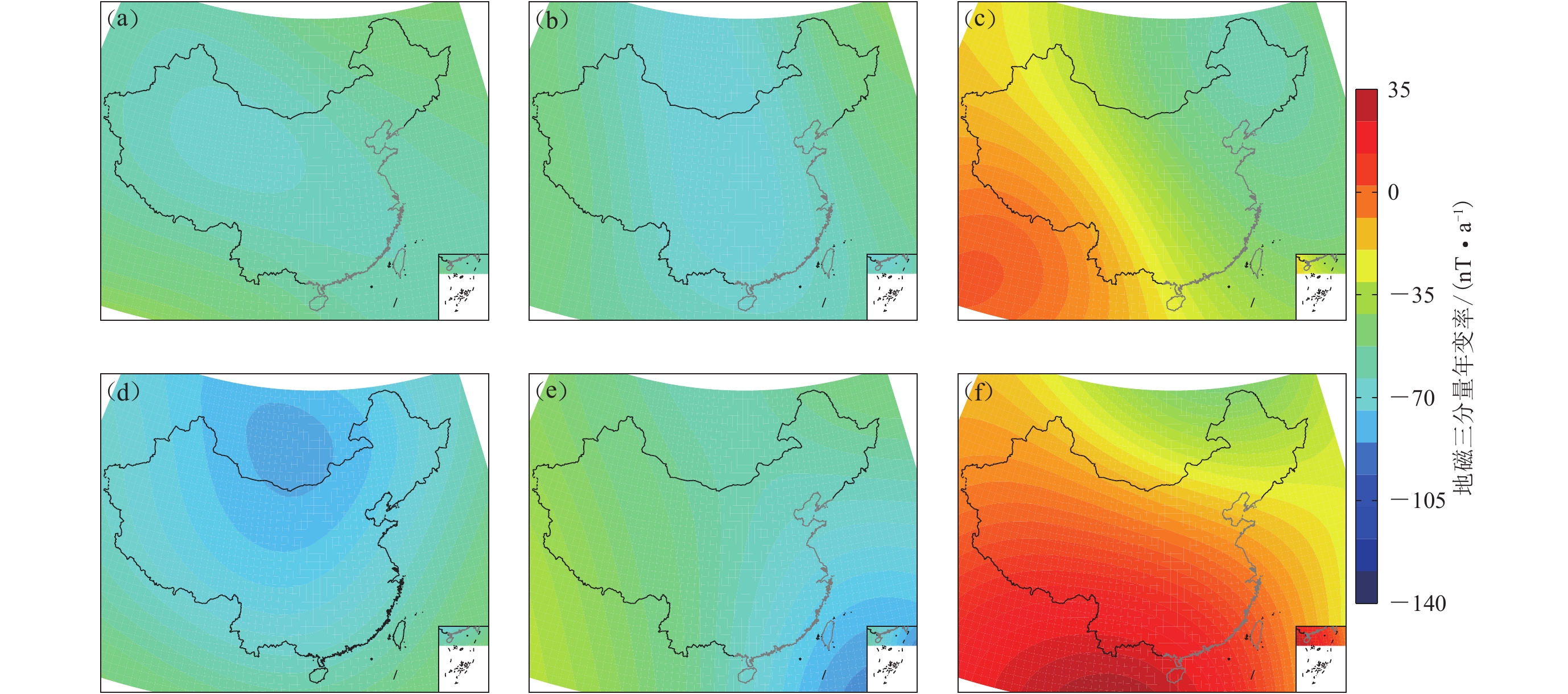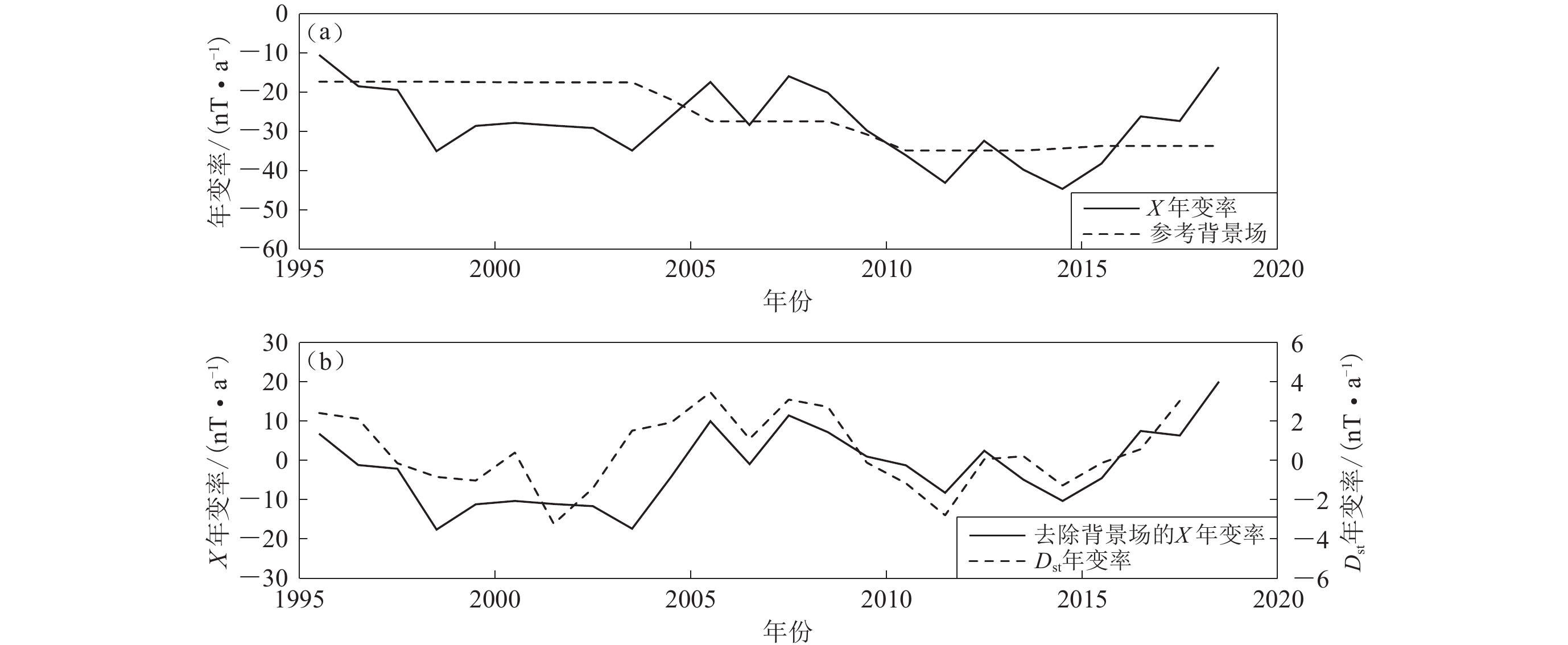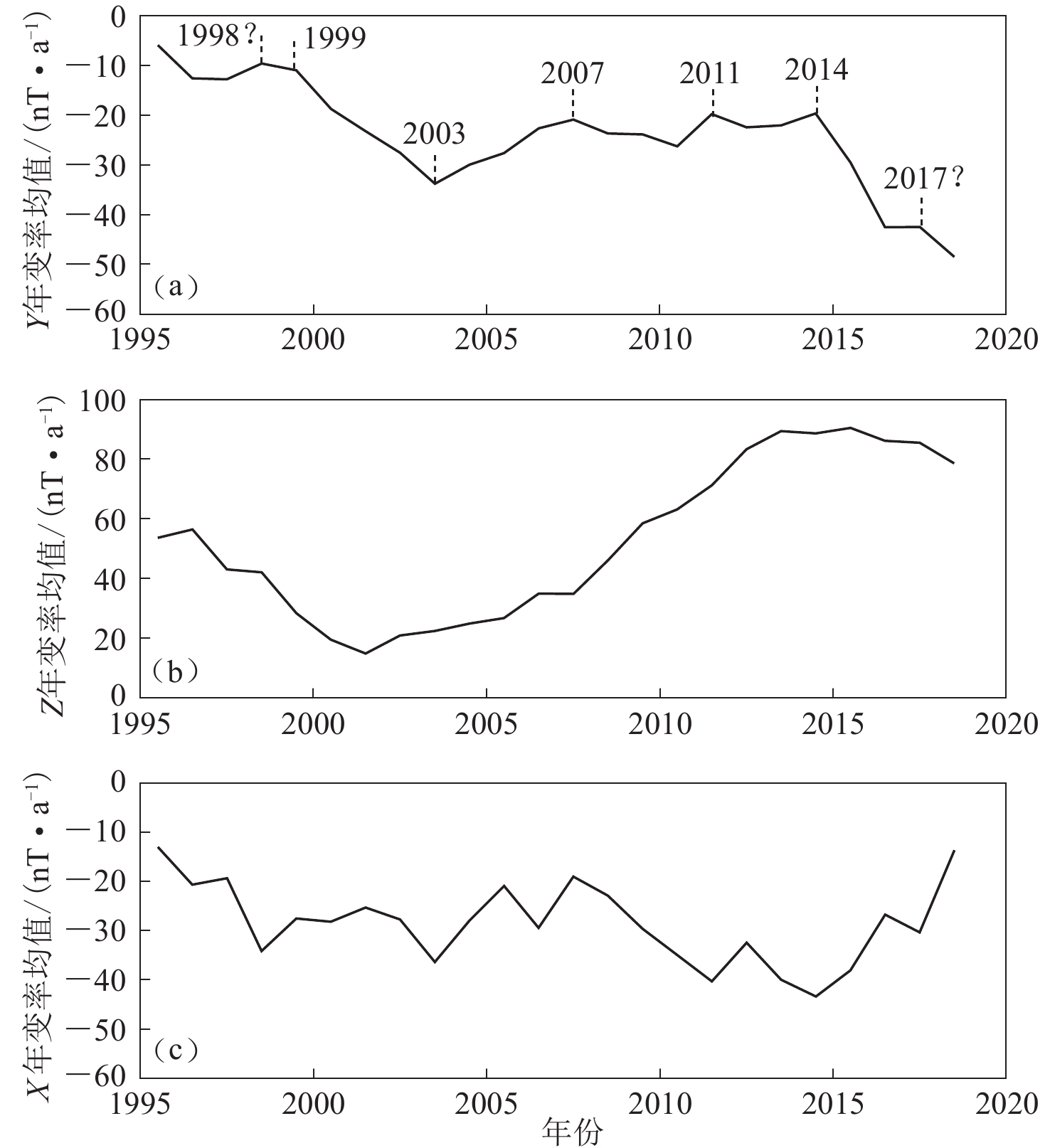Geomagnetic jerks based on the midnight mean of the geomagnetic field from geomagnetic networks of China
-
摘要: 为探索地磁长期变化中地磁急变事件的识别方法,分析地磁急变的特征,本文基于多个地磁台站子夜均值数据,利用线性拟合方法计算了地磁场X,Y和Z三个分量的年变率,对近年来发生的地磁急变事件进行了识别和分析。结果显示:Y分量能对分析时段内已报道的地磁急变事件进行很好的识别,其中1999年的地磁急变事件,在我国区域内发生的时间可能为1998年,此外2017年可能存在一个新的地磁急变事件;Z分量年变率整体变化平缓,2001年和2013年前后发生两次显著的地磁年变率变化,并且分别早于2003年和2014年两次显著的地磁急变事件时间,这与下地幔的高电导率层对不同分量地磁信号从核幔边界传播至地表过程中的延迟作用有关;X分量年变率出现多次地磁急变事件特征,其变化与Dst指数年变率变化具有相关性,可利用其去除X分量年变率中存在的外部空间电流体系影响成分,更可靠地辅助Y分量对地磁急变事件进行识别。总体上,地磁子夜均值数据年变率的空间分布与基于第12代国际地磁参考场(IGRF12)模型计算的地磁数据年变率的空间分布所呈现的变化特征在总趋势上具有一致性,表明地磁台站子夜均值数据能够反映我国区域地球主磁场的变化特征,而分别由子夜均值数据和IGRF12模型计算的2003年Y分量年变率空间分布均存在的显著局部特征,可能与地磁急变事件的区域特征有关。Abstract: In order to explore the identification method of geomagnetic jerks and analyze their characteristics, we identified and analyzed the geomagnetic jerks in recent years based on the secular variation of geomagnetic field X, Y and Z components, which were calculated by linear fitting method based on the midnight mean of geomagnetic field from geomagnetic networks of China. The results show that the occurrence time of the reported geomagnetic jerks can be accurately identified in the analysis period by Y component, the time of the jerk occurred in 1999 may be 1998 in China, and a new jerk may occur in 2017. The secular variation of Z component is gentle, and two significant changes in secular variation took place near the year 2001 and 2013, which are early than the two big geomagnetic jerks in 2003 and 2014, respectively. This is related to the high conductivity layer of the lower mantle, which can delay the propagation of geomagnetic signals from the core-mantle boundary to the surface. The secular variation of X component presents features of many geomagnetic jerks and has a certain correlation with the secular variation of Dst index, which can be used to remove the influence component of the external space current system from the X component. Then the X component can more reliably assist the Y component in recognizing the geomagnetic jerks. However, the spatial distribution of the secular variation of the geomagnetic midnight mean show consistent variation charac-teristics with that of the geomagnetic data calculated based on the IGRF12 model on the general trend, indicating that the midnight mean of geomagnetic stations can reflect the variation characteristics of the main magnetic field in China. Moreover, the spatial distribution of secular variation of Y component in 2003 showed a significant local characteristics, which may be related to the regional characteristics of the geomagnetic jerks.
-
Keywords:
- geomagnetic jerk /
- secular variation /
- midnight mean /
- Dst index
-
-
图 4 2003年和2014年地磁子夜均值X,Y和Z三分量的年变率空间分布
(a)2003年X分量;(b)2003年Y分量;(c)2003年Z分量;(d)2014年X分量;(e)2014年Y分量;(f)2014年Z分量
Figure 4. Spatial distribution of the secular variation of X,Y and Z components of the geomagnetic midnight mean in 2003 and 2014
(a) X component in 2003;(b) Y component in 2003;(c) Z component in 2003;(d) X component in 2014;(e) Y component in 2014;(f) Z component in 2014
图 5 基于IGRF12模型数据计算得到的2003年和2014年地磁三分量年变率的空间分布
(a)2003年X分量;(b)2003年Y分量;(c)2003年Z分量;(d)2014年X分量;(e)2014年Y分量;(f)2014年Z分量
Figure 5. Spatial distribution of the secular variation of X,Y and Z components of the geomagnetic midnight mean calculated by the IGRF12 model in 2003 and 2014
(a) X component in 2003;(b) Y component in 2003;(c) Z component in 2003;(d) X component in 2014;(e) Y component in 2014;(f) Z component in 2014
-
陈伯舫. 1998. 60年代末与70年代末中国4个地磁台处jerk的分析[J]. 地球物理学报,41(1):71–78. doi: 10.3321/j.issn:0001-5733.1998.01.008 Chen P F. 1998. Features of the late 1960’s jerk and the late 1970’s jerk at four observatories in China[J]. Acta Geophysica Sinica,41(1):71–78 (in Chinese).
陈伯舫,王亶文,范国华. 1999. 从中国地磁台网看1991年jerk[J]. 地震地磁观测与研究,20(1):33–38. doi: 10.3969/j.issn.1003-3246.1999.01.007 Chen P F,Wang D W,Fan G H. 1999. Special feature of the 1991 jerk (Y) in the Chinese region[J]. Seismological and Geomagnetic Observation and Research,20(1):33–38 (in Chinese).
陈伯舫. 2006. 2000年Jerk存在吗[J]. 地震地磁观测与研究,27(5):50–52. doi: 10.3969/j.issn.1003-3246.2006.05.010 Chen P F. 2006. On the existence of the 2000 jerk[J]. Seismological and Geomagnetic Observation and Research,27(5):50–52 (in Chinese).
徐文耀. 2009. 地球电磁现象物理学[M]. 合肥: 中国科学技术大学出版社: 140. Xu W Y. 2009. Physics of Electromagnetic Phenomena of the Earth[M]. Hefei: University of Science and Technology of China Press: 140 (in Chinese).
张素琴,杨冬梅,李琪,赵永芬. 2008. 中国大陆两次地磁急变分析[J]. 中国地震,24(3):253–260. doi: 10.3969/j.issn.1001-4683.2008.03.007 Zhang S Q,Yang D M,Li Q,Zhao Y F. 2008. The 1991 and 1999 jerks in China[J]. Earthquake Research in China,24(3):253–260 (in Chinese).
张素琴,胡秀娟,何宇飞,杨冬梅. 2015. F子夜均值逐日差空间异常变化与地震的关系研究[J]. 地震研究,38(1):98–104. doi: 10.3969/j.issn.1000-0666.2015.01.013 Zhang S Q,Hu X J,He Y F,Yang D M. 2015. Research on relationship between spatial anomaly variations of daily variations of geomagnetic total field F at local midnight and earthquake[J]. Journal of Seismological Research,38(1):98–104 (in Chinese).
Alexandrescu M,Gibert D,Hulot G,Le Mouël J L,Saracco G. 1996. Worldwide wavelet analysis of geomagnetic jerks[J]. J Geophys Res,101(B10):21975–21994. doi: 10.1029/96JB01648
Alldredge L R. 1984. A discussion of impulses and jerks in the geomagnetic field[J]. J Geophys Res,89(B6):4403–4412. doi: 10.1029/JB089iB06p04403
Brown W, Beggan C, Macmillan S. 2016. Geomagnetic jerks in the Swarm Era[C]//Proceedings of the ESA Living Planet Symposium. Czech: Prague: 9−13.
Chulliat A,Thébault E,Hulot G. 2010. Core field acceleration pulse as a common cause of the 2003 and 2007 geomagnetic jerks[J]. Geophys Res Lett,37:L07301.
Chulliat A,Maus S. 2014. Geomagnetic secular acceleration,jerks,and a localized standing wave at the core surface from 2000 to 2010[J]. J Geophys Res,119(3):1531–1543. doi: 10.1002/2013JB010604
Chulliat A,Alken P,Maus S. 2015. Fast equatorial waves propagating at the top of the Earth’s core[J]. Geophys Res Lett,42(9):3321–3329. doi: 10.1002/2015GL064067
Courtillot V,Ducruix J,Le Mouël J L. 1978. Sur une accélération récente de la variation séculaire du champ magnétique terrestre[J]. C R Hebd Séanc Acad Sci Paris:Ser D,287:1095–1098.
Courtillot V,Le Mouël J L,Ducruix J,Cazenave A. 1982. Geomagnetic secular variation as a precursor of climatic change[J]. Nature,297(5865):386–387. doi: 10.1038/297386a0
Courtillot V,Le Mouël J L. 1984. Geomagnetic secular variation impulses[J]. Nature,311(5988):709–716. doi: 10.1038/311709a0
De Michelis P,Cafarella L,Meloni A. 1998. Worldwide character of the 1991 geomagnetic jerk[J]. Geophys Res Lett,25(3):377–380. doi: 10.1029/98GL00001
Ducruix J,Courtillot V,Le Mouël J L. 1980. The late 1960s secular variation impulse,the eleven year magnetic variation and the electrical conductivity of the deep mantle[J]. Geophys J R astr Soc,61(1):73–94. doi: 10.1111/j.1365-246X.1980.tb04305.x
Feng Y,Holme R,Cox G A,Jiang Y. 2018. The geomagnetic jerk of 2003.5:Characterisation with regional observatory secular variation data[J]. Phys Earth Planet Inter,278:47–58. doi: 10.1016/j.pepi.2018.03.005
Gavoret J,Gibert D,Menvielle M,Le Mouël J L. 1986. Long-term variations of the external and internal components of the earth’ s magnetic field[J]. J Geophys Res,91(B5):4787–4796. doi: 10.1029/JB091iB05p04787
Jault D,Hulot G,Mouël J L L. 1996. Mechanical core-mantle coupling and dynamo modelling[J]. Phys Earth Planet Inter,98(4):187–191.
Kotzé P B. 2010. The 2007 geomagnetic jerk as observed at the Hermanus magnetic observatory[J]. Phys Comment,2:5–6.
Kotzé P B,Korte M. 2016. Morphology of the southern African geomagnetic field derived from observatory and repeat station survey observations:2005−2014[J]. Earth Planets Space,68:23. doi: 10.1186/s40623-016-0403-7
Kotzé P B. 2017. The 2014 geomagnetic jerk as observed by southern African magnetic observatories[J]. Earth Planets Space,69(1):17. doi: 10.1186/s40623-017-0605-7
Le Mouël J L,Ducruix J,Duyen C H. 1982. The worldwide character of the 1969−1970 impulse of the secular acceleration rate[J]. Phys Earth Planet Inter,28(4):337–350. doi: 10.1016/0031-9201(82)90090-5
Malin S R C,Hodder B M. 1982. Was the 1970 geomagnetic jerk of internal or external origin?[J]. Nature,296(5859):726–728. doi: 10.1038/296726a0
Mandea M,Bellanger E,Le Mouël J L. 2000. A geomagnetic jerk for the end of the 20th century?[J]. Earth Planet Sci Lett,183(3/4):369–373.
Nagao H,Iyemori T,Higuchi T,Nakano S,Araki T. 2002. Local time features of geomagnetic jerks[J]. Earth Planets Space,54(2):119–131. doi: 10.1186/BF03351712
Olsen N,Mandea M. 2007. Investigation of a secular variation impulse using satellite data:The 2003 geomagnetic jerk[J]. Earth Planet Sci Lett,255(1/2):94–105.
Soloviev A,Chulliat A,Bogoutdinov S. 2017. Detection of secular acceleration pulses from magnetic observatory data[J]. Phys Earth Planet Inter,270:128–142. doi: 10.1016/j.pepi.2017.07.005
Torta J M,Pavón-Carrasco F J,Marsal S,Finlay C C. 2015. Evidence for a new geomagnetic jerk in 2014[J]. Geophys Res Lett,42(19):7933–7940. doi: 10.1002/2015GL065501
-
期刊类型引用(1)
1. 白春华,康国发,高国明,文丽敏,孙苑芃. 中国地区地磁急变特征对地磁场长期加速度的响应. 地球物理学报. 2023(09): 3747-3760 .  百度学术
百度学术
其他类型引用(0)




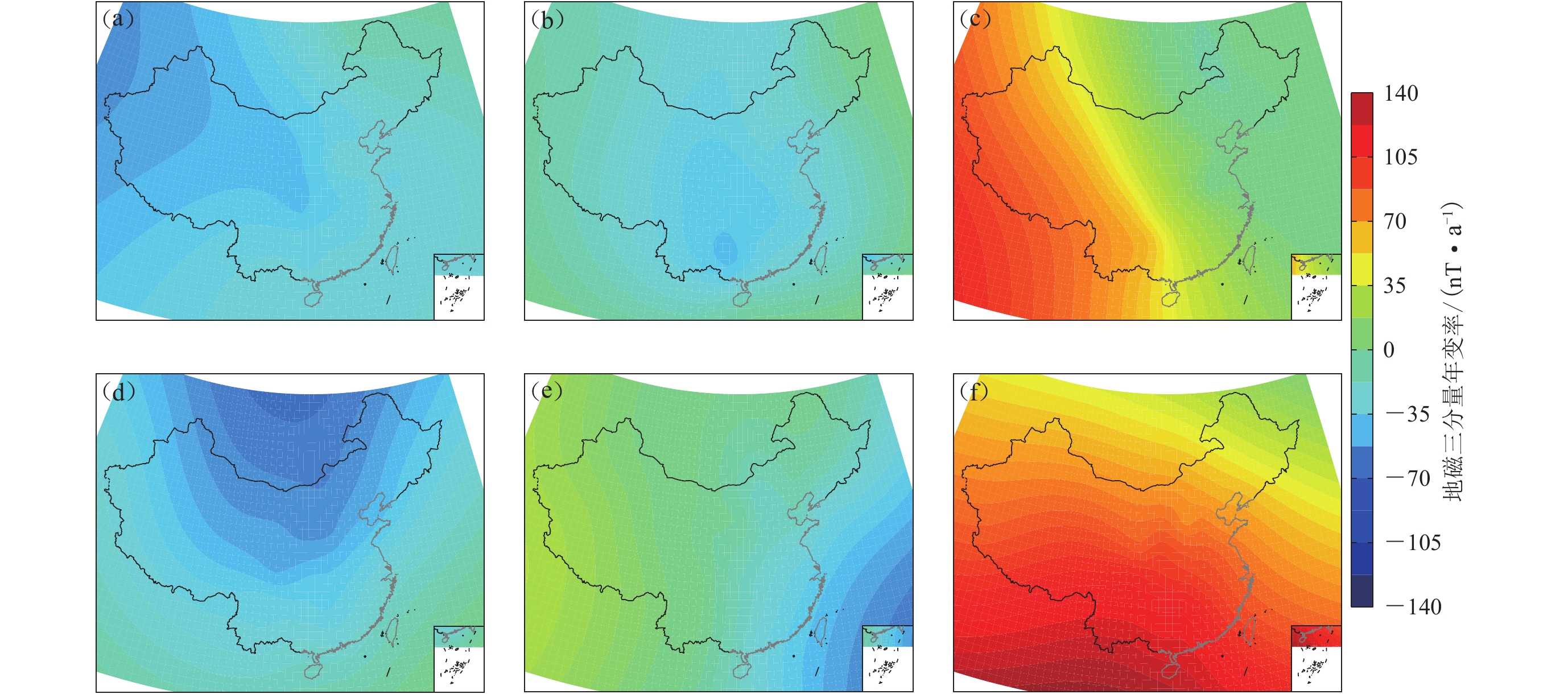
 下载:
下载:
